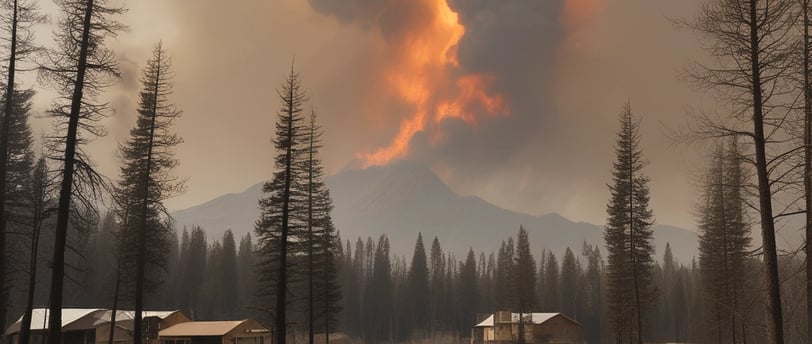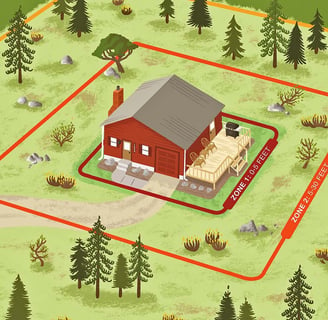Fire Mitigation
Protecting your home and property from wildfires: Essential tips for fire mitigation in Durango Colorado
3/4/20252 min read


Protecting Your Home and Property from Wildfire: Essential Tips for Mitigation
As wildfires become an increasingly prevalent threat in many regions, it’s vital for homeowners, especially those in fire-prone areas, to take proactive steps to protect their properties. Implementing effective wildfire mitigation strategies can significantly reduce the risk of fire damage to your home and surrounding landscape. Here’s a guide to help you safeguard your property against the devastating effects of wildfires.
Understanding Wildfire Risks
Wildfires can ignite from various sources, including lightning strikes, human activities, and even embers carried by the wind. Understanding the unique risks associated with your location is the first step in wildfire preparedness. Familiarize yourself with local fire weather patterns and historical fire incidents. This knowledge will help you make informed decisions about the necessary precautions.
Creating Defensible Space
One of the most effective ways to protect your home is by creating a defensible space. This is a buffer zone around your property that reduces the likelihood of fire spreading to your home. The National Fire Protection Association (NFPA) recommends a defensible space around your house. Here are some key strategies to establish this zone:
1. Clear Vegetation: Remove dead plants, grass, and weeds, as they can serve as fuel for fires. Trim back overhanging branches and ensure that trees are spaced adequately to prevent fire from jumping from one to another.
2. Maintain Your Lawn: Keep your grass well-watered and mowed to a height of three inches or less. This simple maintenance task can significantly reduce fire risk.
3. Use Fire-Resistant Landscaping: Opt for fire-resistant plants and materials in your landscaping. Native plants that are adapted to your local environment are often more resilient to drought and fire.
Hardening Your Home
Beyond the landscape, hardening your home is crucial for fire prevention. Here are some effective strategies:
1. Roofing and Siding Materials: If you’re building or renovating, consider using fire-resistant materials for your roof and siding. Class A roofing materials, such as metal, tile, or asphalt shingles, provide better protection against embers.
2. Windows and Vents: Install tempered glass windows and screens for vents to help prevent embers from entering your home. Ensure that vents are covered with metal mesh to keep out embers and debris.
3. Install Spark Arresters: Use spark arresters on chimneys and stovepipes to prevent sparks from escaping and igniting nearby vegetation.
Emergency Preparedness
In addition to physical barriers, having an emergency plan in place is essential. Here are some steps to consider:
1. Create a Family Evacuation Plan: Discuss and establish a family evacuation route and meeting place. Make sure everyone knows the plan, and practice it regularly.
2. Emergency Kit: Prepare an emergency kit that includes essential supplies such as water, food, medications, flashlights, and important documents. Keep this kit in an easily accessible location.
3. Stay Informed: Monitor local news and fire alerts in your area. Being aware of fire conditions and warnings can help you make timely decisions to protect your family and property.
Conclusion
Wildfire mitigation is a shared responsibility that begins at home. By creating defensible space, hardening your property, and developing an emergency plan, you can significantly reduce the risk of wildfire damage. Take action today to protect your home and loved ones from the devastating effects of wildfires. Remember, preparation is the key to safety, and every step counts in the fight against wildfire


Bespoke Property Management Services
Expert property management for luxury estates.
Oliver Scott-Tomlin
Inquire
oliver@scotttomlin.com
(970) 317-5281
© 2025. All rights reserved.
